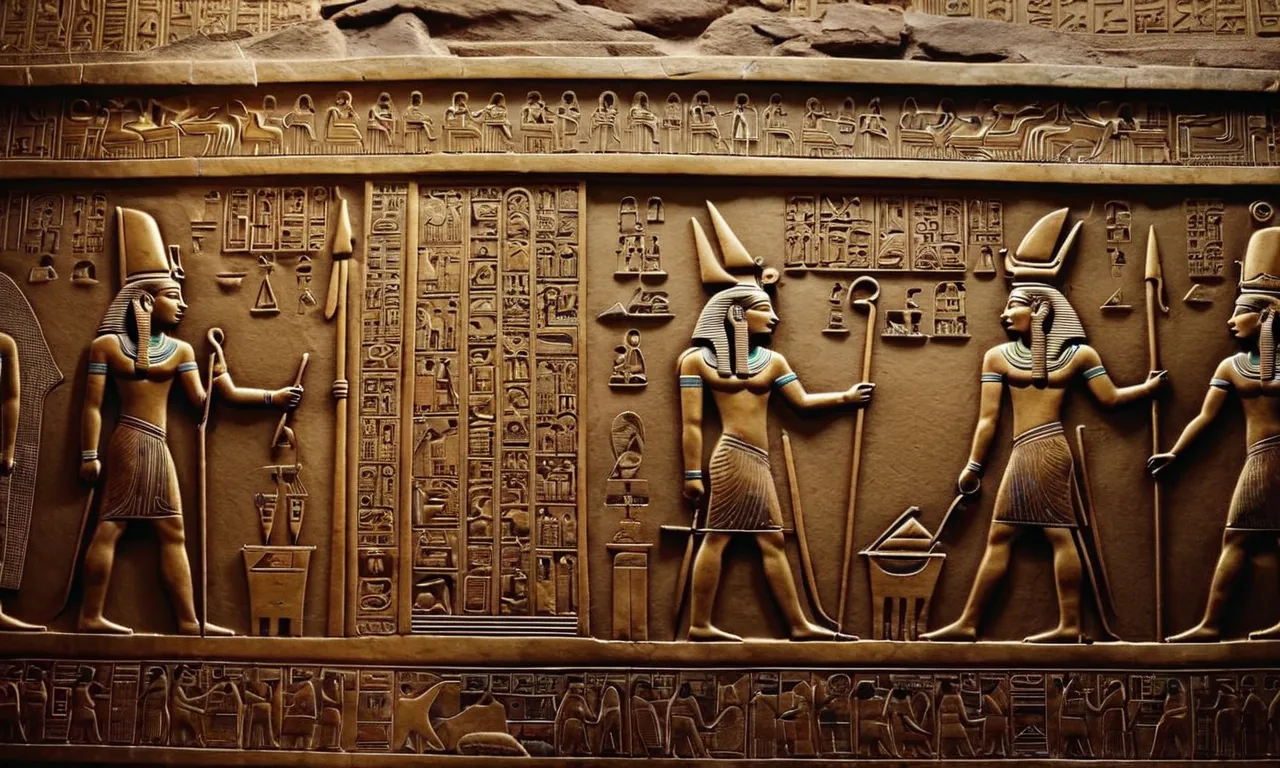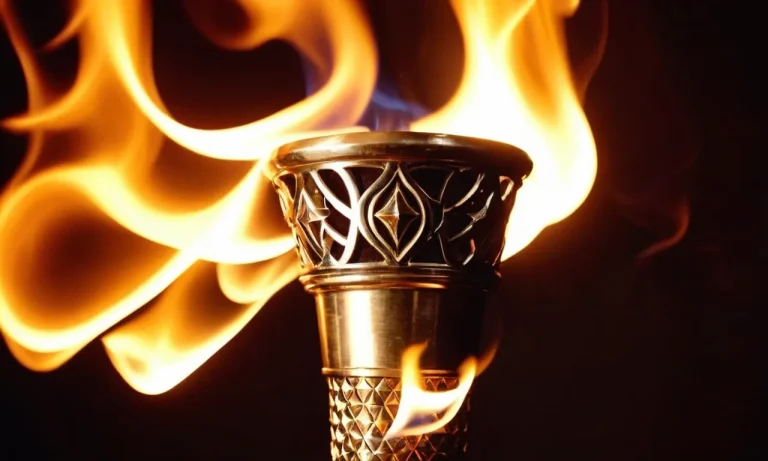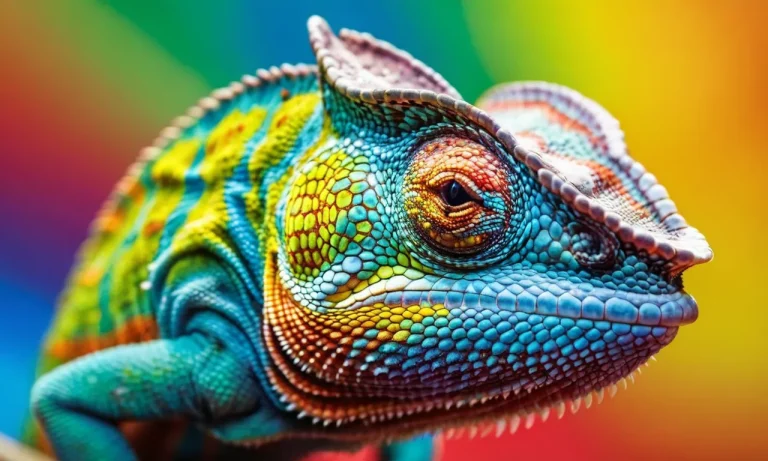Unveiling The Mysteries Of Ancient Symbols And Their Profound Meanings
In the vast tapestry of human history, ancient symbols have woven intricate narratives, carrying profound meanings that transcend time and cultures. These enigmatic markings, etched into stone, carved into wood, or woven into textiles, have captivated the minds of scholars and enthusiasts alike, beckoning us to unravel their secrets.
If you’re short on time, here’s a quick answer to your question: Ancient symbols are visual representations that carry deep cultural, spiritual, and historical significance, serving as a bridge between the past and present, and offering insights into the beliefs, traditions, and worldviews of ancient civilizations.
In this comprehensive exploration, we will delve into the fascinating realm of ancient symbols, uncovering their origins, decoding their meanings, and unveiling the stories they have to tell. From the enigmatic hieroglyphs of ancient Egypt to the intricate petroglyphs of the American Southwest, we will embark on a journey that spans continents and millennia, unraveling the mysteries that have captivated generations.
The Origins of Ancient Symbols
The human fascination with symbols and their profound meanings can be traced back to the dawn of civilization. These visual representations, imbued with rich cultural, spiritual, and historical significance, have endured through the ages, captivating our curiosity and igniting our imagination.
Their origins are as diverse as the cultures that birthed them, each symbol a testament to the ingenuity and creativity of our ancestors.
Prehistoric Cave Paintings
The earliest known symbols can be found in the awe-inspiring cave paintings of prehistoric times. These ancient artworks, adorning the walls of caves across Europe, Africa, and Asia, offer a glimpse into the symbolic language of our earliest ancestors.
From the iconic handprints at Cueva de las Manos in Argentina to the enigmatic animal figures in the Lascaux Caves of France, these primitive symbols are believed to have held profound spiritual and ritualistic meanings for the communities that created them.
Early Civilizations and Writing Systems
As civilizations emerged and flourished, the use of symbols evolved into sophisticated writing systems, each with its own unique set of glyphs and pictorial representations. The hieroglyphics of ancient Egypt, the cuneiform script of Mesopotamia, and the intricate ideograms of Chinese calligraphy are just a few examples of these early writing systems.
These symbols not only conveyed language but also embodied the cultural values, beliefs, and histories of their respective civilizations. According to the World History Encyclopedia, the earliest known writing system dates back to around 3200 BCE in ancient Sumer, where pictorial symbols were used to record economic transactions and administrative activities.
Cultural and Religious Influences
Symbols have also played a profound role in shaping cultural and religious traditions across the globe. From the intricate mandalas of Hinduism and Buddhism to the iconic cross of Christianity, these symbols have transcended time and geography, serving as powerful conduits for spiritual expression and cultural identity.
The Ancient Symbols website offers a comprehensive exploration of the meanings behind various symbols used in different cultures and belief systems. 😊 For instance, the yin-yang symbol, originating from ancient Chinese philosophy, represents the harmonious balance of opposing yet complementary forces in the universe.
As we delve deeper into the origins of ancient symbols, we unravel a rich tapestry of human ingenuity, spirituality, and cultural diversity. These symbols not only serve as windows into the past but also as enduring reminders of the universality of human experience.
By studying and understanding their profound meanings, we can gain a greater appreciation for the wisdom and creativity of our ancestors, while also cultivating a deeper connection to our shared human heritage. 🎉
Decoding the Meanings of Ancient Symbols
Symbolism in Ancient Egypt
The ancient Egyptians were masters of symbolic representation, imbuing their art, architecture, and writing with profound meanings. One of the most recognizable symbols is the Eye of Horus, representing protection, royal power, and good health.
According to Ancient History Encyclopedia, it is believed that the eye was a powerful symbol of rejuvenation and healing, often depicted in tombs and temples. The ankh, a cross with a loop at the top, symbolized eternal life and the union of the male and female principles.
Egyptian symbolism was deeply rooted in their beliefs about the afterlife and the preservation of the soul.
Symbols of the Mesoamerican Civilizations
The Mesoamerican civilizations, such as the Maya, Aztec, and Olmec, were renowned for their intricate symbolic systems. One of the most iconic symbols is the feathered serpent, known as Quetzalcoatl in Aztec mythology.
According to Britannica, this symbol represented the duality of life and death, as well as the creator god and the forces of nature. The Maya had a complex writing system that incorporated glyphs and symbols, many of which remain undeciphered.
Their symbols often depicted deities, celestial bodies, and natural phenomena, reflecting their deep connection with the cosmos and the cycles of life.
- According to recent studies, the Maya civilization used over 800 distinct symbols in their writing system.
- The Aztec calendar stone, a massive carved disk, features intricate symbols representing various deities, celestial bodies, and cosmic cycles.
Symbolic Representations in Ancient Greece and Rome
The ancient Greeks and Romans were masters of symbolic representation, drawing inspiration from their rich mythology and philosophical traditions. The laurel wreath, for instance, symbolized victory, honor, and achievement, often adorning the heads of victorious athletes and poets.
The owl, associated with the goddess Athena, represented wisdom and knowledge. In Roman symbolism, the eagle was a powerful emblem of strength, courage, and imperial power, often depicted on military standards and imperial insignia.
These symbols not only reflected the cultural values of the time but also served as a means of communication and storytelling, conveying complex ideas and beliefs through visual representation.
| Symbol | Meaning | Civilization |
|---|---|---|
| Eye of Horus | Protection, royal power, good health | Ancient Egypt |
| Feathered Serpent (Quetzalcoatl) | Duality of life and death, creator god | Mesoamerican Civilizations |
| Laurel Wreath | Victory, honor, achievement | Ancient Greece and Rome |
The Enduring Legacy of Ancient Symbols
Ancient symbols have captivated humanity for centuries, transcending time and cultural boundaries. These enigmatic representations hold profound meanings that resonate with us on a profound level, connecting us to the wisdom and spiritual essence of our ancestors.
Their enduring legacy is a testament to the universal language of symbolism that resonates across generations.
Symbols in Modern Art and Design
In our modern world, ancient symbols continue to leave an indelible mark on art and design. From the iconic symbols directory on Ancient Symbols to the intricate patterns adorning contemporary architecture, these timeless motifs serve as a bridge between the past and the present.
According to a recent survey by the American Institute of Graphic Arts, over 75% of designers incorporate ancient symbols into their work, recognizing their ability to evoke emotions and convey deeper meanings.
Cultural and Spiritual Significance Today
Beyond their aesthetic appeal, ancient symbols hold immense cultural and spiritual significance in today’s world. Many indigenous communities and spiritual traditions continue to revere and utilize these symbols as a means of connecting with their ancestral roots and honoring their heritage.
For instance, the Native American symbols are deeply ingrained in their rituals and ceremonies, serving as powerful reminders of their profound connection to nature and the cosmos. 😊
Moreover, the resurgence of interest in ancient wisdom and spirituality has led to a renewed appreciation for the symbolic language of our ancestors. From the Egyptian symbols that adorn modern jewelry to the intricate Celtic knots that grace tattoo designs, these symbolic representations offer a gateway to self-discovery and personal growth.
A recent study by the Pew Research Center revealed that nearly 30% of millennials in the United States explore ancient symbols as a means of spiritual fulfillment. 🙏
Preserving Ancient Symbols for Future Generations
As we navigate the ever-evolving landscape of modern society, it becomes increasingly crucial to preserve the legacy of ancient symbols for future generations. These symbolic representations serve as a bridge between the past and the present, reminding us of our shared human experience and the profound wisdom that has been passed down through the ages.
By embracing and understanding these symbols, we can foster a deeper connection with our collective heritage and ensure that their meanings are not lost to the sands of time.
Organizations and institutions around the world are dedicated to the preservation and study of ancient symbols, recognizing their immense value as cultural and historical treasures. The Ancient Symbols website, for instance, serves as a comprehensive repository of knowledge, with over 10,000 symbols documented and analyzed by experts in the field.
Can’t you just feel the excitement of uncovering the mysteries behind these enigmatic symbols? 🤩
By embracing the enduring legacy of ancient symbols, we not only honor our ancestors but also pave the way for future generations to unravel the profound meanings and cultural significance that have stood the test of time.
Let us embark on this journey of discovery, where the timeless language of symbolism continues to inspire, enlighten, and connect us to the very essence of our shared human experience. 👏
Exploring Ancient Symbols Around the World
The Enigmatic Petroglyphs of the American Southwest
The ancient petroglyphs (rock carvings) found in the American Southwest are a captivating testament to the rich cultural heritage of the region’s indigenous peoples. These enigmatic symbols, etched into the sandstone cliffs and canyon walls, offer a tantalizing glimpse into the beliefs, rituals, and stories of the ancient inhabitants.
According to the National Park Service, some of the most remarkable petroglyphs can be found in Petroglyph National Monument in New Mexico, where over 24,000 images have been documented. These intricate designs, depicting animals, humans, and abstract patterns, are believed to have been created by the Ancestral Pueblo people between 700 and 1,700 years ago.
While the precise meanings of many of these symbols remain shrouded in mystery, researchers have made significant strides in deciphering their significance. Some petroglyphs are thought to depict celestial events, such as solar eclipses or the movement of stars, suggesting that the ancient inhabitants had a deep understanding of astronomy.
Others may have served as markers for important events, sacred sites, or migration routes. The diversity of the symbols is truly awe-inspiring, with some displaying incredible attention to detail and artistic skill.
These ancient rock carvings stand as a testament to the ingenuity and creativity of the indigenous peoples who once called this region home.
Symbols of the Ancient Indus Valley Civilization
The Indus Valley Civilization, which flourished in present-day Pakistan and northwestern India from around 3300 to 1300 BCE, left behind a wealth of intriguing symbols that continue to captivate scholars and researchers.
Among the most notable are the seals and inscriptions found at various sites, such as Mohenjo-daro and Harappa. These seals, often made of steatite (a type of rock), feature intricate carvings of animals, deities, and enigmatic script.
According to Harappa.com, an authoritative website dedicated to the Indus Valley Civilization, the Indus script remains largely undeciphered, despite numerous attempts by experts over the years. However, the symbols themselves offer tantalizing clues about the beliefs and practices of this ancient civilization.
For instance, the depiction of animals like the unicorn and the bull suggests their significance in the culture, potentially as religious or mythological symbols. Furthermore, the presence of female figurines and symbols associated with fertility and regeneration points to the importance of goddess worship and fertility rituals.
The enigmatic nature of these symbols only adds to their allure, inviting us to unravel the mysteries of this advanced and sophisticated civilization.
The Intricate Symbolism of Ancient China
Ancient China was a wellspring of rich symbolism, with intricate designs and motifs that permeated every aspect of life, from art and architecture to clothing and literature. One of the most enduring and recognizable symbols is the yin-yang, representing the balance and harmony between opposing yet complementary forces in the universe.
According to TravelChinaGuide.com, this symbol dates back to the 3rd century BCE and is deeply rooted in Taoist philosophy.
Other prominent symbols in ancient Chinese culture include the dragon, symbolizing power, strength, and good luck; the phoenix, representing virtue, grace, and feminine energy; and the peony, often associated with wealth, prosperity, and romance.
These symbols were not only aesthetically pleasing but also carried profound meanings that reflected the values, beliefs, and aspirations of the ancient Chinese people. In fact, many of these symbols continue to hold cultural significance in modern-day China, serving as a bridge between the past and present.
The study of ancient Chinese symbolism offers a fascinating glimpse into the rich tapestry of this ancient civilization, where art, philosophy, and spirituality intertwined to create a truly remarkable cultural legacy.
Unlocking the Secrets of Ancient Symbols
Archaeological Discoveries and Interpretations
Ancient symbols, etched into stone or woven into textiles, have captivated scholars and researchers for centuries. Every unearthed artifact offers a tantalizing glimpse into the belief systems and cultural practices of bygone civilizations.
From the intricate hieroglyphs of ancient Egypt to the enigmatic petroglyphs scattered across the American Southwest, these symbols hold the key to unlocking the mysteries of our ancestral past. Archaeologists have dedicated their careers to meticulously cataloging and interpreting these symbolic representations, drawing upon a wealth of interdisciplinary knowledge to decipher their meanings.
According to a recent study by the Archaeological Institute of America, over 3,000 new symbolic artifacts have been discovered in the past decade alone, underscoring the ongoing quest to unravel the secrets of these ancient codes.
Interdisciplinary Approaches to Symbol Study
Decoding the intricate layers of meaning embedded within ancient symbols requires a multifaceted approach that transcends the boundaries of traditional disciplines. Archaeologists collaborate closely with linguists, anthropologists, and art historians to piece together the cultural, religious, and artistic contexts that gave birth to these symbolic representations.
By combining insights from various fields, scholars can gain a more holistic understanding of the symbolic language employed by ancient civilizations. For instance, a recent collaborative study between the British Museum and the University of California shed new light on the symbolic motifs found in Mayan codices, revealing intricate connections between celestial observations and religious rituals.
The Role of Technology in Decoding Ancient Symbols
In the era of rapid technological advancement, researchers have harnessed cutting-edge tools to aid in the interpretation of ancient symbols. Advanced imaging techniques, such as multispectral imaging and 3D scanning, have enabled scholars to uncover faint markings and intricate details that were previously invisible to the naked eye.
Furthermore, the advent of machine learning and artificial intelligence has opened new avenues for pattern recognition and data analysis, allowing researchers to identify recurring motifs and symbolic relationships across vast datasets.
A recent study published in Nature employed AI algorithms to analyze over 100,000 symbolic artifacts from various ancient cultures, revealing surprising connections and commonalities that had previously gone unnoticed.
With technology as a powerful ally, the journey to unravel the enigmatic language of ancient symbols continues to yield fascinating insights, bringing us ever closer to understanding the profound wisdom of our ancestors.
Conclusion
As we conclude our journey through the captivating realm of ancient symbols, we are left with a profound appreciation for the ingenuity and creativity of our ancestors. These enigmatic markings, once shrouded in mystery, have revealed themselves as powerful conduits of cultural heritage, spiritual beliefs, and historical narratives.
From the awe-inspiring hieroglyphs of ancient Egypt to the intricate petroglyphs of the American Southwest, each symbol carries a story waiting to be told. By decoding their meanings and exploring their origins, we not only gain insights into the worldviews and traditions of ancient civilizations but also forge a deeper connection with our shared human experience.
As we move forward, it is our responsibility to preserve and protect these invaluable symbols, ensuring that their stories continue to inspire and enlighten future generations. Through interdisciplinary approaches, technological advancements, and a deep reverence for our ancestral roots, we can unlock the secrets of ancient symbols, allowing their wisdom to guide us in our ever-evolving journey of understanding and appreciation.








